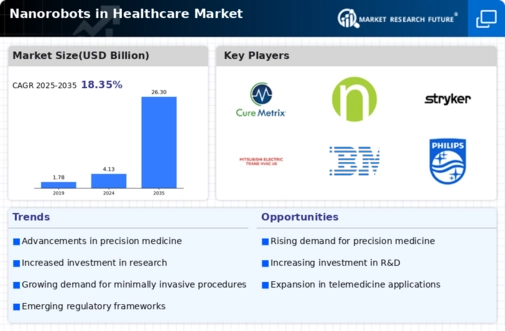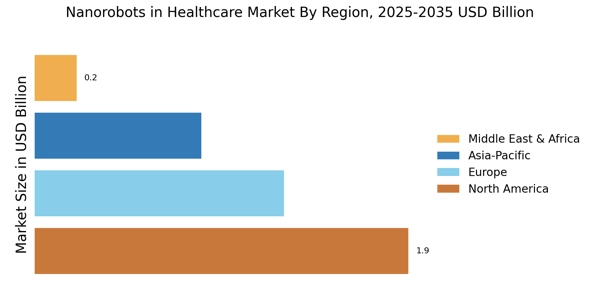Advancements in Nanotechnology
The rapid advancements in nanotechnology serve as a crucial driver for the Nanorobots in Healthcare Market. Innovations in materials science and engineering have enabled the development of sophisticated nanorobots capable of performing complex tasks within the human body. These advancements facilitate targeted drug delivery, precise diagnostics, and even cellular repair, which are pivotal in treating various diseases. The market for nanotechnology in healthcare is projected to witness exponential growth, with estimates suggesting a substantial increase in market size over the next few years. As researchers continue to explore the potential of nanorobots, the Nanorobots in Healthcare Market is poised to benefit from these technological breakthroughs, leading to enhanced therapeutic options and improved patient care.
Emerging Applications in Diagnostics
The emergence of nanorobots in diagnostic applications represents a transformative driver for the Nanorobots in Healthcare Market. These tiny devices can enhance diagnostic accuracy through their ability to detect diseases at an early stage, often before symptoms manifest. Innovations in nanotechnology have led to the development of highly sensitive diagnostic tools that can identify biomarkers with remarkable precision. The diagnostic market is projected to grow substantially, driven by the need for early detection and intervention in various health conditions. As healthcare providers increasingly adopt these advanced diagnostic solutions, the Nanorobots in Healthcare Market is likely to witness significant advancements, ultimately leading to improved patient outcomes and more effective healthcare delivery.
Growing Prevalence of Chronic Diseases
The escalating prevalence of chronic diseases is a significant driver influencing the Nanorobots in Healthcare Market. Conditions such as diabetes, cancer, and cardiovascular diseases are on the rise, necessitating innovative treatment solutions. Nanorobots offer promising avenues for managing these diseases through targeted therapies and real-time monitoring. The market for chronic disease management is expanding, with projections indicating a substantial increase in demand for advanced treatment modalities. As healthcare systems seek to address the challenges posed by chronic illnesses, the integration of nanorobots into treatment protocols appears to be a viable solution. This trend not only enhances the efficacy of treatments but also aligns with the broader goals of improving patient outcomes and reducing healthcare expenditures.
Increased Focus on Personalized Medicine
The shift towards personalized medicine is emerging as a pivotal driver in the Nanorobots in Healthcare Market. As healthcare moves away from one-size-fits-all approaches, the demand for tailored treatments is growing. Nanorobots can be engineered to deliver therapies specific to individual patient profiles, enhancing treatment efficacy and minimizing side effects. This trend is supported by advancements in genomics and biotechnology, which enable a deeper understanding of patient-specific needs. The market for personalized medicine is expected to expand significantly, with estimates suggesting a notable increase in investment and research in this area. Consequently, the integration of nanorobots into personalized treatment regimens is likely to propel the Nanorobots in Healthcare Market forward, fostering innovation and improving patient care.
Rising Demand for Minimally Invasive Procedures
The increasing preference for minimally invasive procedures is a notable driver in the Nanorobots in Healthcare Market. Patients and healthcare providers alike are gravitating towards techniques that reduce recovery time and minimize surgical risks. Nanorobots, with their ability to perform precise tasks at a cellular level, align perfectly with this trend. According to recent estimates, the minimally invasive surgical market is projected to reach substantial figures, indicating a growing acceptance of such technologies. This shift not only enhances patient outcomes but also reduces healthcare costs, making nanorobots an attractive option for various medical applications. As the demand for these procedures continues to rise, the Nanorobots in Healthcare Market is likely to experience significant growth, driven by innovations that cater to this evolving landscape.


















Leave a Comment